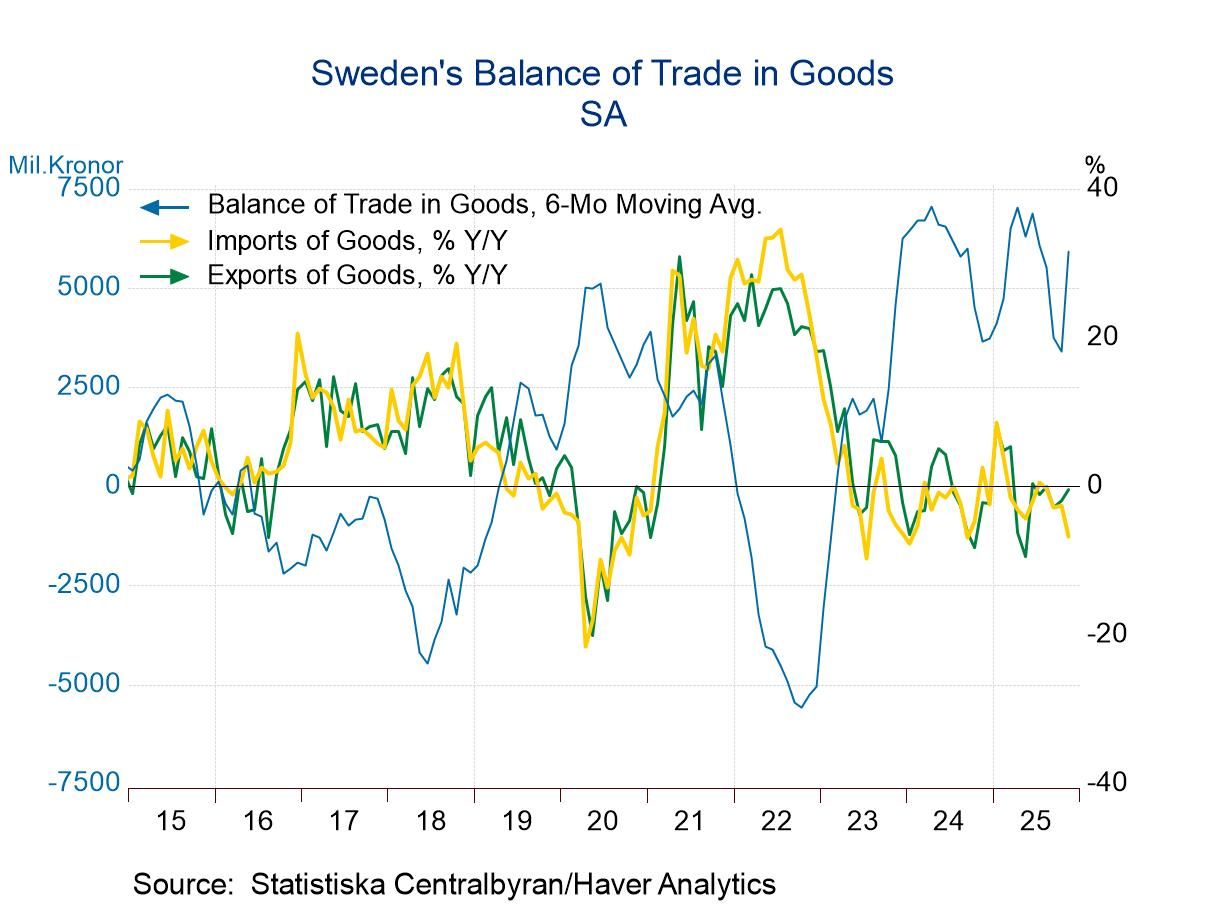 Global| Nov 10 2023
Global| Nov 10 2023Charts of the Week: Oiling the Wheels
by:Andrew Cates
|in:Economy in Brief
Summary
In a week that’s been sparse with market-moving data and central bank communications the focus in financial markets has shifted to the oil market. That’s largely because oil prices have declined to three-month lows, with Brent crude now around $80 a barrel. In our charts this week we take a look at broader commodity price trends in the past few weeks (chart 1) and then go onto examine how the normalisation of supply chain pressures in the world economy over the past few months has been contributing to the decline of inflationary pressures more generally (chart 2). Staying with inflation, we look next at the ECB’s latest consumer expectations survey and still-sticky inflation expectations in particular (chart 3). We turn next to China and the surprising weakness of its foreign direct investment inflows in Q3 (chart 4). We then turn our gaze to trade flows and specifically highlight the weakness of the UK’s export activity with EU (and non-EU) countries over the past few years (chart 5). Finally, we weigh in on the US economy with some perspective on the Fed’s Q4 senior loan survey and the still-weak indications this carries about credit demand (chart 6).
Global supply chain pressures Global supply chain pressures are at record lows and, with a lag, that points to weaker inflationary pressures in the world economy in the period ahead. That’s the message from chart 1 below showing a steep decline in the Fed’s global supply chain pressure index in October and specifically to a level that’s 1.74 standard deviations below normal. The index is highly correlated with the Citigroup G10 inflation surprise index which tends to chime too with the trajectory of headline inflation in those economies.
Chart 1: Global supply chain pressures and the Citigroup G10 inflation surprise index

Commodity prices That erasure of supply chain pressures has already helped to pull many commodity prices down from highly elevated levels over the past few months. The past few days have seen some acceleration in that downward trend with many commodity prices declining quite sharply. As noted, that includes oil (and other energy) prices. But the price of many food commodities (including fats and oils) has seen steep declines in recent days as well (chart 2).
Chart 2: The CRB commodity price index, all commodities, foodstuffs, fats and oil

Euro area inflation expectations In contrast to this, the latest Consumer Expectations Survey for the euro area for September will not have been received positively by the ECB. For example, one-year ahead inflation expectations surprised market participants by rising. Meanwhile, 3 year-ahead ahead expectations, arguably the more important measure for the ECB, were unchanged. Looking through the volatility, longer-term inflation expectations appear to be stabilising, but at higher levels than the ECB would probably like (chart 3).
Chart 3: The ECB’s consumer expectations survey: inflation expectations gauges

China’s FDI China recorded its first-ever quarterly deficit in foreign direct investment (FDI), according to its latest balance of payments data. Direct investment liabilities - a broad measure of FDI that includes foreign companies' retained earnings in China - were in deficit to the tune of $11.8 billion during the July-September period (chart 4). This arguably underscores the recent weakness of China’s economy and its more negative appeal to foreign investors.
Chart 4: China’s inward foreign direct investment flows

UK exports with the EU The UK continues to debate the economic repercussions from its departure from the European Union. An analysis of the UK's trade volume data suggests a noticeable impact. For instance, since the mid-2016 referendum, trade volumes of goods to the EU have decreased by around 7%. In contrast, trade with non-EU countries has increased by 6.8% (chart 5).
Chart 5: UK trade volume with EU and non-EU countries

US banking conditions The Fed’s latest senior loan officer survey for Q4 suggests that higher interest rates are continuing to exact a toll on the economy. US banks tightened lending standards for businesses and households in the third quarter, although the pace of change appeared to ease. In the meantime, demand for loans fell broadly as well and particularly for mortgages (chart 6). On the whole the survey remains consistent with the idea that the wheels of credit in the US economy are slowing down.
Chart 6: US Fed Senior Loan Officer Survey: Lending standards and credit demand

Andrew Cates
AuthorMore in Author Profile »Andy Cates joined Haver Analytics as a Senior Economist in 2020. Andy has more than 25 years of experience forecasting the global economic outlook and in assessing the implications for policy settings and financial markets. He has held various senior positions in London in a number of Investment Banks including as Head of Developed Markets Economics at Nomura and as Chief Eurozone Economist at RBS. These followed a spell of 21 years as Senior International Economist at UBS, 5 of which were spent in Singapore. Prior to his time in financial services Andy was a UK economist at HM Treasury in London holding positions in the domestic forecasting and macroeconomic modelling units. He has a BA in Economics from the University of York and an MSc in Economics and Econometrics from the University of Southampton.






